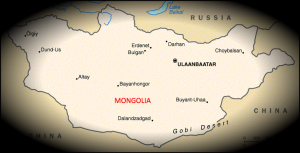CHWs Around The World (Part III): Mongolia’s Feldshers

Over the last few months, we’ve been highlighting best practices from some of the most unique and successful community health worker (CHW) programs from around the world. Although the One Million Community Health Workers (1mCHW) Campaign only works in sub-Saharan Africa, we recognize the impressive work that these diverse initiatives are doing to break down barriers to universal health coverage (UHC).
Last week at the United Nations General Assembly, the 1mCHW Campaign hosted a side session on the importance of human resources for health (HRH) in the fight to achieve UHC. As the development community moves towards the Millennium Development Goals’ 2015 expiration date, and considers how best to ensure the continued improvement of critical health indicators post-2015, we must acknowledge the significance of HRH globally. Many programs, both within and outside of the Campaign’s focus area, are making huge strides towards UHC through HRH investments.
If you missed our earlier installments, read up on Iran’s behvarz and El Salvador’s promotores on our blog! This time, we examine Mongolia’s CHWs, known as feldshers.
———–
Mongolia is a very large country with a small and dispersed population. One-third of the country’s population lives in the capital, Ulaanbaatar; most of the rest of Mongolians engage in a semi-nomadic herding lifestyle. Living in tents, often in areas completely devoid of roads or any formal infrastructure, rural Mongolians have real difficulty accessing health services.
Primary health care is delivered to rural Mongolians by feldshers, the local term for CHWs in most of Eastern Europe and the ex-Soviet world. Feldsher is derived from the German word feldscher, which means “field shearer” and was the name of barber surgeons in the military dating back to the 1800s. Today, Mongolian feldshers do much more than amputations on soldiers in the field.
Feldshers work and live in their local community, providing a range of services such as antenatal and postnatal care, disease surveillance and epidemiological monitoring, health promotion and education, and referral of cases to higher-level health facilities. They have recently been lauded for successfully helping reduce maternal as well as infant and child mortality. In 2001, as many as 169 women and 30 infants lost their lives for every 100,000 live births. By 2008, after the Asian Development Bank trained and deployed an additional 7,850 feldshers in rural provinces in Mongolia, those rates had dropped to 85 and 24 respectively.
Feldshers are also crucial in maintaining communication between government and nomadic rural populations. With such a hugely dispersed population, the CHWs channel all communication between administration and community. The workers also routinely complete data collection activities on demographic, socioeconomic, and health topics. In both directions, feldshers facilitate communication between these groups, and are often the only source of communication between rural populations and their government.
It is interesting to consider the extent to which Mongolia’s success in community health is due to its Soviet beginnings, as the USSR’s socialist regime believed the federal government to be wholly responsible for the provision and financing of health care. Today, the national government has decentralized health care administration to the provinces, which in turn has devolved leadership to the subdistricts, known as bags. It is typical for each of the 1,550 bags in Mongolia to have one or two feldshers.
Mongolian CHWs have a number of barriers to surmount in providing equitable access to health care. Most significantly, feldshers have a huge geographic area to cover and must travel extremely far distances to reach all families in their catchment area. This leads to fewer visits per year than recommended. Additionally, some feldshers complain of a lack of equipment, particularly medicines.
Even given these quite extensive challenges, feldshers are a great example of a successful cadre of community health workers. The Mongolian Ministry of Health has recently been able to halve the country’s maternal mortality rate—an impressive feat, and one which is, for the most part, attributed to the country’s extensive CHW program. Mongolia has also had incredibly impressive vaccination success, which is frequently attributed to the dedication of CHWs. Feldshers keep track of populations’ immunization records, and then accompany the “vaccinator” to households in their bag. The way in which the feldshers keep the migratory population in contact with the outside agencies and the government is also admirable, and could be successfully replicated in a number of rural countries across the globe.

Comments are closed